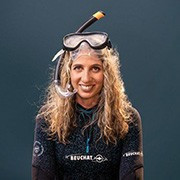1. Education
|
Period of study |
Name of University |
Subject |
Degree |
Date of Award |
|
2003-2008 |
Tel-Aviv University |
Zoology |
Ph.D. |
2008 |
|
2001-2003 |
Tel-Aviv University |
Zoology- Program in Ecology & Environmental Quality |
M.Sc. *Summa cum laude |
2003 |
|
1998-2001 |
Tel-Aviv University |
Biology |
B.Sc. |
2001 |
2. Academic and professional experience
December 2017 Associate Professor, School of Zoology, Faculty of Life Sciences, Tel-Aviv University, Israel
October 2012-Current Senior Lecturer, Zoology Department, Tel-Aviv University
2011-2012 “VATAT” supported Research Fellow, National Collections of Natural History, Tel-Aviv University, Israel
2009-2011 Post-doctoral F ellow , Biology Department, University of Washington, Seattle, WA, USA. Topic: “ Molecular and Morphological Approaches to Ascidian Phylogeny and Systematics”. Advisor: Prof. Billie J Swalla
2008-2009 Post-doctoral fellow supported by “ VATAT ” , National Collections of Natural History, Tel-Aviv University, Israel
3. Research Grants
2012 : The European Commission Marie Curie Career Integration Grants (CIG)
2013 : The German-Israeli Foundation for Scientific Research and Development Young Scientists’ Program
2014 : Yad-Hanadiv Ecosystem Services in Marine Environments: International Workshop Series.
2015 : ISF Equipment for young faculty
2015 : ISF Regular Research Program
2015 : BSF Young
2016 : Schulich Ocean Studies Centre Initiative
EXTERNAL GRANTS (PI: Shenkar N)
2020-2023 Israel Science Foundation-NSFC (co PI: Prof. Aibin Zhan, Chinese Academy of Sciences) "Mechanisms of rapid local adaptation in marine invaders: ascidians as a case study" 360,000 NIS per year
4. Prizes and awards
2018 Tel-Aviv University, Office of the Rector, Rector Excellence in teaching
2016 Ministry of Science Technology and Space Exhibition “Israeli discoveries and developments that influenced the world”
2014,2015 Amongst 100 excellent lecturers at Tel-Aviv University
2013 Caroline von Humboldt Prize for young female researchers €15,000
2008 Dan David Prize $10,000


